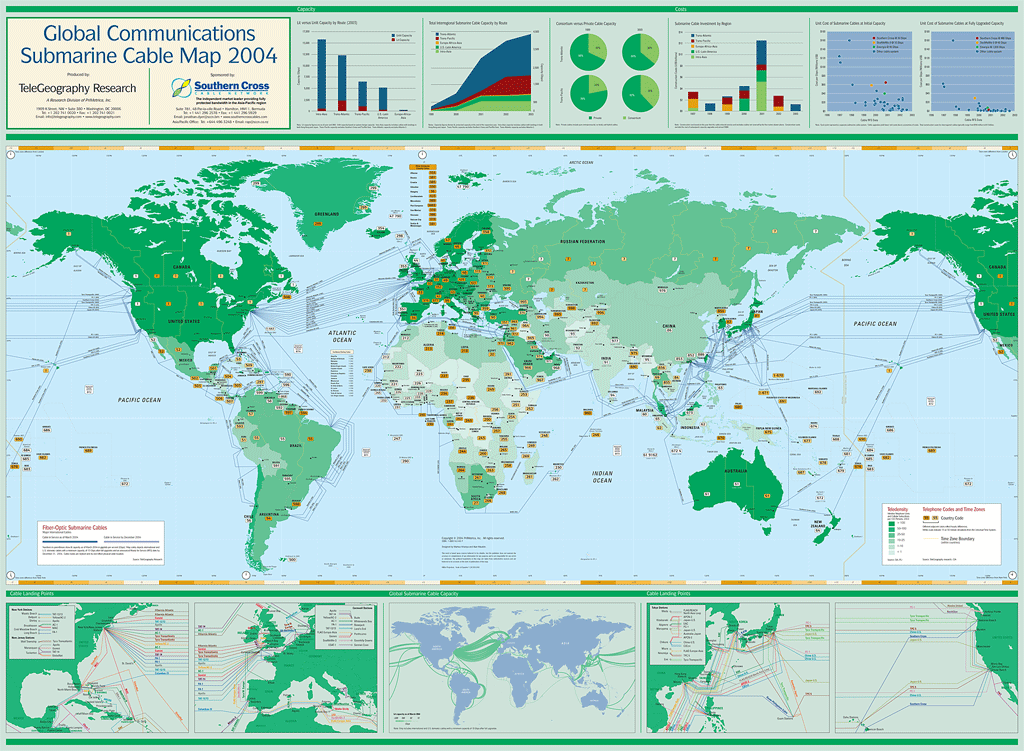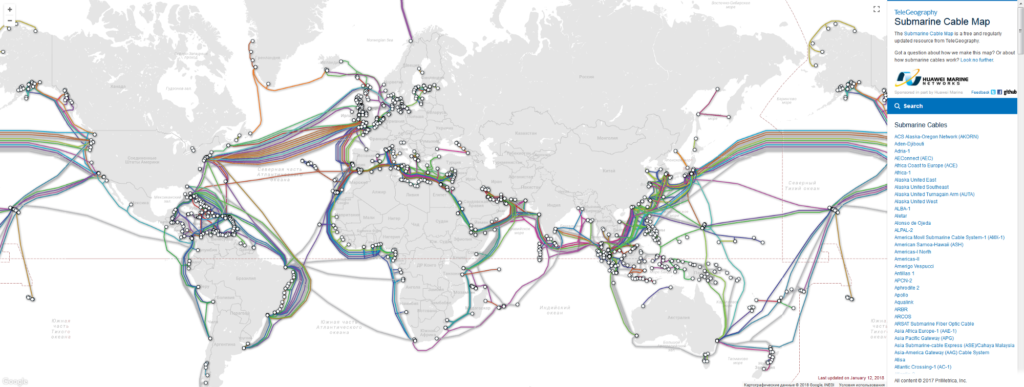By Mikaprok for SouthFront
A couple of weeks ago, the public was shocked by the “hot” news: Russian submarines are passing close to the strategic communication channel – the trans-Atlantic telecommunications cable linking the US to their European partners.
What will happen if somebody with a huge scissors in his hands leans out of the submarine and cuts the cable. Terrible consequences!
Then the lights on the planet go out, the night will reign. Supposedly only the happy Russia will sparkle with the lights of the internal “Cheburashka” network on nuclear batteries.
All this was presented by domestic media as a fantastic sensation.
Practically the beginning of the Cold War.
From nowhere, probably from the very bottom of the Atlantic, the British general was raised and share with us “his opinion”.
Interesting fact: for the last 2 years the specialized magazines spoke out about such possibility four times, except for the mentioned case.
Actually, the coming year is an anniversary – 160 years since the first telegraph connection appeared between Newfoundland and Ireland. The first message sent was a 509-page letter transmitted 17 hours and 40 minutes from one addressee to another, that is, Queen Victoria and President James Buchanan.
Little has changed: the signals are still go from one country to another. Sometimes they are metaphorical by nature :-)
There is a service company TeleGeography, monitoring information about underwater networks all around world.
At the moment, there are 350 cables launched on the seabed, sometimes at a depth of several kilometers.
Traditionally, telecommunication consortia pay for their laying and remove the cream from their use.
The total volume of traffic in 2016 reached a figure of 3544 Tb/s, about twice the value of 2014.
75% of the data is still coming from users, but the real tsunami is ahead – the amount of traffic from data centers, clouds and IoT is growing exponentially. From 5% 3 years ago to 22.5% now.
Now it is necessary to put 150,000 km. Wires. 10,000 km. already laid in 2016, and 16,000 km. (!) in 2015.
This task is estimated at $ 9-10 billion in the next 2 years and is guaranteed to bring the contractor about $ 35 billion in profit for the same period.
For such projects, a specialized forum STF is organized, on which formally (and informally) development orders are distributed.
Actually, most of the activities already have been distributed on British Telecom together with several European players.
As at the very beginning of 2016, Microsoft and Google against any rules of propriety announced a deal with Telefonica for the laying of 6600 km. cable between Virginia Beach, Va. and Bilbao, Spain.
Previously, they had to rent from European companies the infrastructure for their traffic (those same data centers and Amazon’s clouds). Now they decided to go ahead.
September 21, 2017 technological work was completed and the launch is scheduled for the first quarter of 2018.
Not surprisingly, a large number of people/organization were willing to cut this cable :-)
Actually, now, in addition to the obvious loss of a piece of the pie (and potentially a few more pies), American corporations are trying to change the rules of the game.
The precedent for passing data on the pipe belonging to the data holder creates an ambiguous monopoly and allows you to enter the traditional telecommuter field.
Yes, and the role in Southeast Asia should now be replayed.
After all, two of his comrades plan to join Facebook to prepare such a project between the western coast of the United States and Taiwan.
Immediately after this announcement I suppose the passage of Chinese submarines in dangerous proximity to American cables :-)







